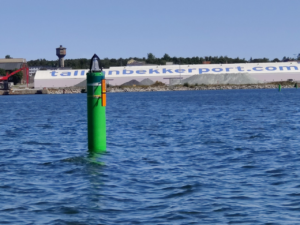Understanding the Role of Fluorescence in Surface Oil Detection

Detecting oil spills quickly and accurately is crucial for safeguarding water environments. LDI’s Remote Optical Watcher (ROW) leverages UV-induced fluorescence to identify oil films on water surfaces with exceptional sensitivity. This article explores how fluorescence works, why it’s preferred for surface oil detection, and how ROW applies this technology effectively.

What Is Fluorescence and Why It Matters
Fluorescence occurs when certain molecules absorb ultraviolet (UV) light and re-emit it at longer (visible) wavelengths. Many hydrocarbons—particularly aromatic compounds found in fuels like diesel, kerosene, and jet fuel—naturally fluoresce under UV exposure . This makes fluorescence a highly selective method for detecting oil contamination.
UV Fluorescence vs Other Techniques
Traditional methods like turbidity or absorption can be impacted by non-hydrocarbon materials, making it hard to distinguish oil from dust or sediment. In contrast, fluorescence specifically targets aromatic hydrocarbons, allowing ROW to detect oil films reliably—even down to 1 µm thickness
How ROW Uses UV Fluorescence for Oil Detection
-
Pulsed UV Excitation
ROW emits pulsed UV light onto the water surface. These quick bursts reduce background noise and improve signal clarity compared to continuous UV lighting . -
Selective Detection
The light emitted by excited hydrocarbons is filtered to detect oil-specific fluorescence. This ensures minimal false alarms and high specificity for oil contaminants . -
High Sensitivity at Distance
ROW can detect oil films as thin as 1 µm, from up to 10 m away, while positioned outside the water. This non-contact configuration reduces maintenance and prevents fouling .
Real-World Effectiveness
The ROW sensor has been successfully used at desalination, refinery, and port installations . Its ability to provide real-time alerts via telemetry ensures rapid intervention, protecting infrastructures and ecosystems .
Technical Snapshot: How Fluorescence Enables ROW’s Performance
-
Detection Limit: ≤ 1 µm oil film
-
Range: Up to 10 m
-
Power: < 2 W, compatible with solar or battery systems
-
Enclosures: Aluminium, Stainless Steel 316L, ATEX EXD for hazardous areas
-
Telemetry: Relay, Modbus, RS‑485, 4–20 mA; integrates with SCADA/LMS systems
-
LED Lifespan: Approx. 5 years, ensuring long-term reliability
 Why Choose ROW for Oil Spill Detection
Why Choose ROW for Oil Spill Detection
-
Selective Detection: Fluorescence identifies oil, not other contaminants
-
High Sensitivity: Detects ultra-thin films, enabling early response
-
Non-Contact Sensor: Reduces fouling and maintenance needs
-
Continuous Operation: 24/7 performance across diverse settings
-
Regulatory Support: Helps meet environmental standards and compliance
Learn More or Get in Touch
Discover how ROW fits into your monitoring strategy—whether in ports, water treatment, airports, or industrial sites.
Discover the full range of ROW models, visit the ROW product page or Contact us today!
 Why Choose ROW for Oil Spill Detection
Why Choose ROW for Oil Spill Detection